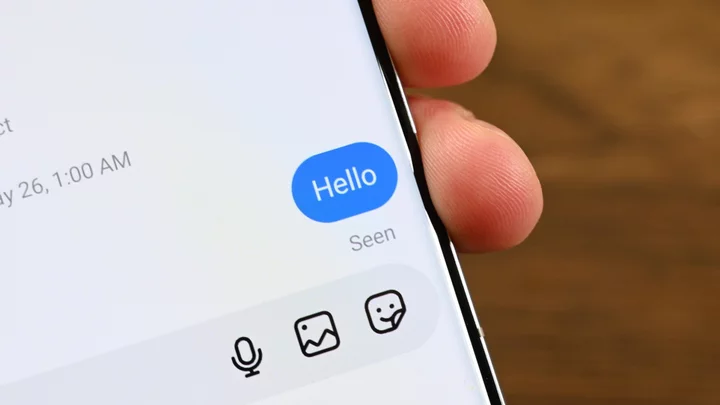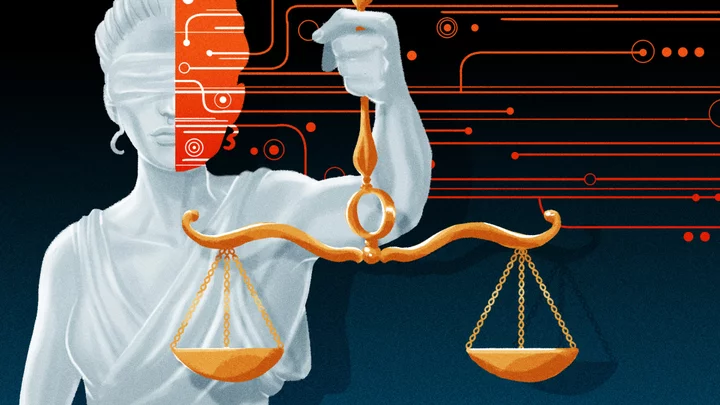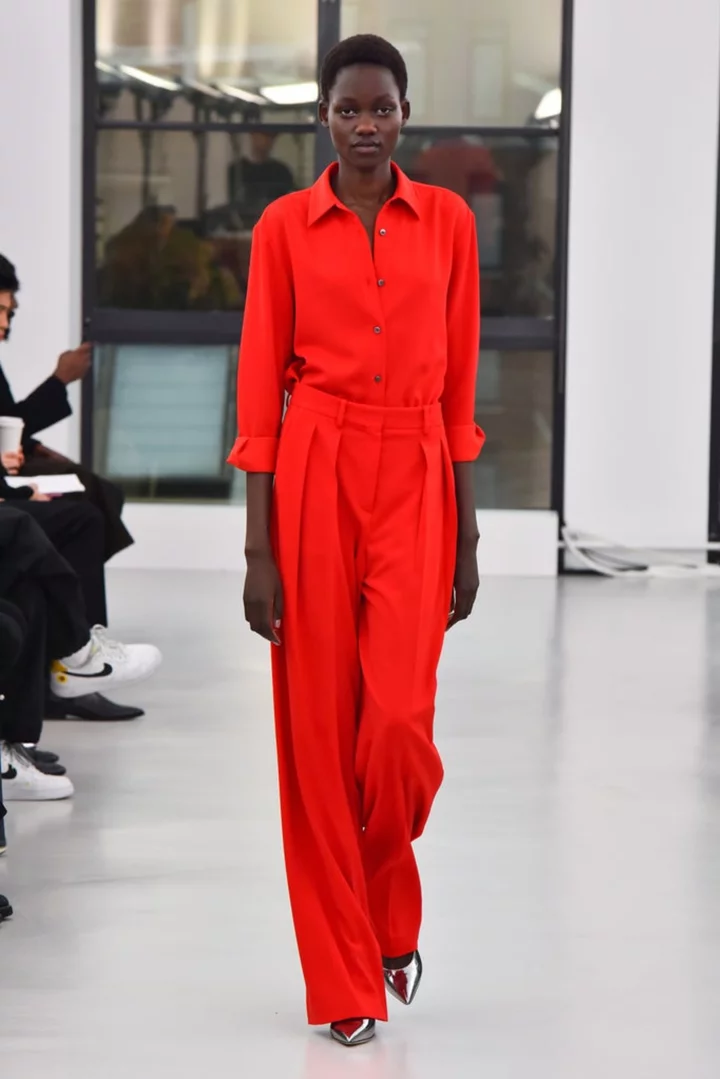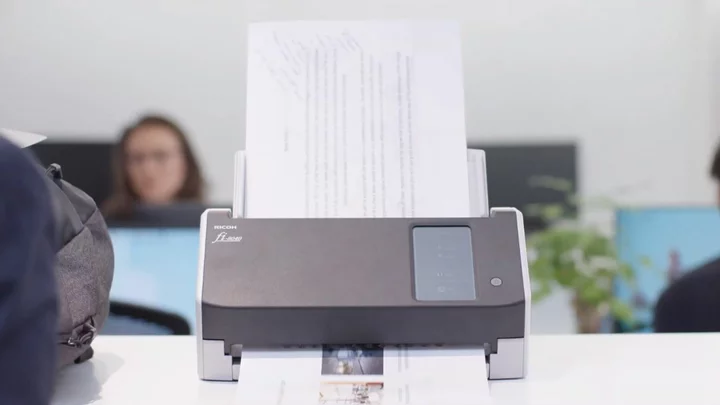Disney's The Little Mermaid is a classic fable, warning children of the dangers of making a fool's bargain in pursuit of a dream. Ariel, a headstrong mermaid, trades her voice for a pair of legs, so that she might catch the eye of the prince she's crushing on. Unfortunately, the live-action remake of this Academy Award-winning animated film has made a similarly foolish swap.
Directed by Rob Marshall, 2023's The Little Mermaid trades the attitude and animation of Disney's 1989 adaptation of Hans Christian Andersen's fantastical tale for a realistic look that dulls the luster and lacks imagination. While there are some treasures to be found under this sea, this Disney offering drowns in confounding choices, from its dim color palette to its jarring character designs and bizarre additions.
Halle Bailey shines as Ariel.
From here to Disney+. Credit: Disney Enterprises, Inc.American singer-songwriter Halle Bailey has a pretty and strong voice, which lends itself well to The Little Mermaid's songs, be they those originally penned in 1989 by Howard Ashman, or new numbers, with lyrics by Lin-Manuel Miranda. (Alan Menken composed the music for both versions.) From the moment Ariel splashes onscreen — with the help of a glimmering CGI tail — Bailey is well-suited to the modern brand of Disney princess: beautiful, pleasant, and radiant.
Bailey is enchanting as Ariel, even convincingly conversing with the mermaid's trio of animal friends — who on set may have been little more than greenscreen balls meant to match her eye-line. However, this little mermaid is forced into the same smiley constraints of the 2010s Disney princess, whose character designers refused to allow them to smirk, sneer, or otherwise act out with less-than-lovely facial expressions. Under Marshall's direction, Bailey's Ariel might look wide-eyed in dismay, but she's far from the fiery brat of the animated version.
Her father is similarly sanded down. As King Triton, Javier Bardem — sporting a flowing silver beard that matches a stunning cape of wriggling minnows — parrots a string of familiar lines from the first film, but without the bluster that Kenneth Mars brought to the animated monarch. This is a much gentler Triton, which not only makes his court's fear of displeasing him a bit confusing but also makes his signature destruction of Ariel's treasure trove feel more a requirement than an earned character moment.
SEE ALSO: All of Disney's 'live-action' adaptations, ranked from worst to bestSebastian, Flounder, and Scuttle are ruined by realism.
Remember when Flounder was cute? Credit: Disney Enterprises, Inc.Making The Little Mermaid live-action allowed director Rob Marshall to look to the entire ocean for inspiration. So, he offers beautiful backdrops of coral and kelp and schools of incredible real-life creatures, like dolphins, jellyfish, and crinoids that look like a living jumble of undulating feathers. And yet, for all the wealth and wonder that lives under the sea, what Marshall gave us for Ariel's friends Sebastian, Flounder, and Scuttle are astounding eyesores with less personality than an abandoned flip-flop.
SEE ALSO: Are you ready to have a Jimmy Buffett summer?Gone are Sebastian's expressive visage and his theatricality. Instead, he's a squat red wallet with legs, so stodgy that even Hamilton standout Daveed Diggs couldn't bring life to him. The acclaimed actor and rapper delivers signature Sebastian lines with all the enthusiasm of, well, a dead crab. It's as if Marshall's direction to his voice cast was "just throw that line away." Perhaps intended to ground the supposed realism brought by live-action, Marshall's approach results in so many lines thrown away into this ocean that they could be an ecological disaster on par with the Pacific Garbage Patch.
To Jacob Tremblay's credit, he brings exactly the kind of plucky/borderline annoying little-brother energy that is Flounder's brand. But once more, Marshall's vision has transformed a cuddly cartoon character into a perplexingly ugly real-life rendition.
Perhaps this is why "Under the Sea" is devoid of the illustrative depictions from the original. No other animals are given the sentient treatment. Not even Ursula's eels, Flotsam and Jetsam, get to speak. So, there is no newt with a flute, or carp playing harp, no slug cutting a rug, or hot crustacean band. And maybe that's for the best, if Flounder is what Marshall thinks qualifies as cute.
It only gets worse with Scuttle.
Who let this happen? Credit: Disney Enterprises, Inc.The garrulous and goofy gull is rendered as a feathered abomination, who is actually hard to look at. Far from the capering comic figure that Buddy Hackett memorably voiced in 1989, this sharp-billed, beady-eyed critter looks downright diseased as she spouts familiar lines via Awkwafina's raspy delivery. The rapper/actress seems bound by a casual approach that kills punchlines without mercy. Then comes a new Miranda-penned rap song called "Scuttlebutt."
See, it's meant to be funny, because it's gossipy Scuttle gossiping while repeating her name and the word "butt" a lot, which is sure to be an illicit thrill for kids who consider that a bad word. For grown-ups, however, this song is so dissonantly juvenile and tedious that not even Diggs and Awkwafina furiously duetting its speedy delivery can help.
SEE ALSO: 'Renfield' review: Nicolas Cage as Dracula kills, but what else is new?Who asked for more Eric? No. Really.
Credit: Disney Enterprises, Inc.I've watched the original Little Mermaid more times than I can count, and never in any of those rewatchings have I ever thought, "You know who I want to know more about? Prince Eric."
Handsome with a rebellious streak, Eric was established just enough to make him understandably crushworthy but then left open (or vacant) enough for young girls to pour all their romantic dreams into him. But in this Little Mermaid, Eric has politics and a solo number and childhood trauma. And he's deeply boring.
Another new Miranda song, "Wild Uncharted Waters," allows Eric to sing about his crush on the mysterious woman who saved him from the shipwreck. He wanders around country lanes and ship's rigging belting about risk and romance, and it's fine. Jonah Hauer-King sings well. But there's nothing worthwhile or exciting in these new Eric flourishes. And while Hauer-King is handsome, his Eric lacks the rascally attitude of the animated version, who in retrospect felt like an Aladdin prototype. Even with the soggy backstory, live-action Eric repeatedly brings up (which has no plot payoff), he's posh and proper and has no spark with Bailey. So, the central romance feels less slow-burn than inert.
The script by Ron Clements and David Magee adds a heightened conflict between humans and merpeople, making Eric and Ariel feel more Romeo and Juliet than before. The land queen (Noma Dumezweni) and sea king spout off prejudiced rhetoric, then Eric and Ariel seem more noble for trying to break down walls with their love. It's not enough to want to make their own way in the world, they have to save it too.
Disney, you're more fun when you let your heroes and villains be petty.
Melissa McCarthy as Ursula rules.
Credit: Disney Enterprises, Inc.One single performance is not damned by Marshall's drab direction. Melissa McCarthy brings a full-throated, hip-swinging portrayal of the underwater diva who has awed audiences for decades. Within her swagger and growling delivery, McCarthy channels Divine, the drag queen inspiration for Ursula's character design, as well as Pat Carroll's gleefully wicked performance in the original.
McCarthy's Ursula is a bit less bawdy. Her dress is more modest, and her lyrics are woefully trimmed of their most provocative bits. (I guess we need the time for Eric to make ocean metaphor music?) Still, this is Ursula in the flesh. Where the rest of the cast is confined to being grounded and pleasant, she — as a villain — is free to be outrageous. Thank the sea gods!
The comedy A-lister makes a feast of this performance, sinking her teeth into "Poor Unfortunate Souls," mugging like a Disney Villain worth her salt water, and bringing kinetic humor to the part that feels distinctly McCarthy. Even Marshall's suffocatingly muted colors can't touch her. Where the others flit their fins in muted seascapes, she lives in a high-contrast darkness punctuated by her bioluminescent tentacles. Now that flourish tickles at what might have been if Disney urged its live-action remake directors toward innovation. Ultimately, this Ursula is familiar but not stodgy, freshly exhilarating, and even scary.
The Little Mermaid is murky, but occasionally magical.
Ariel, you deserve better! Credit: Disney Enterprises, Inc.Why Disney is tending toward grey live-action adaptations, I truly can't guess. Some scenes in this film — like Peter Pan and Wendy — are so dim it looks like you're watching them through a dirty car window. But Marshall, who at his most dazzling gave us Chicago, does create some moments of cinematic underwater splendor.
The designs of the merpeople are gorgeous and distinctive, suggesting a vibrant community — even if we only get a glimpse of it. Then, in "Part of Your World," Ariel lounging in the sun and sand as she imagines her life on land is glorious. You can almost feel the warmth of the sunshine and the grit of the sand. In other scenes, Bailey's joy is immaculate, no matter how meh the movie as a whole may be. And surely, her tender portrayal will thrill new generations of kids, giddy to imagine themselves as part of the world of these beloved fairytales.
But in a film that is so determinedly about chasing dreams and finding one's voice, it's impossible not to be disappointed by how underwhelming so much of it is. As The Little Mermaid crawls by at a snail's pace, the wondrous moments are weighed down by wasted opportunities for spectacle, emotion, and unapologetic bombast.
Overall, this Little Mermaid has some splendor, but — like its eponymous heroine — I want mooooooooore!
The Little Mermaid opens only in theaters May 26.









